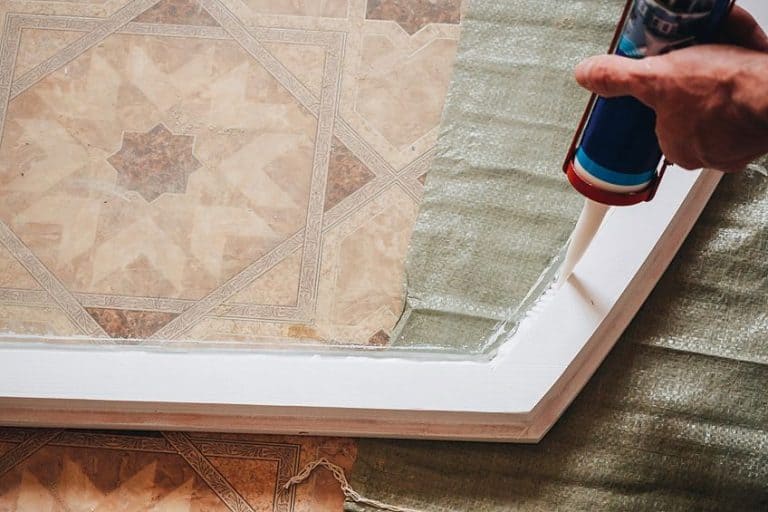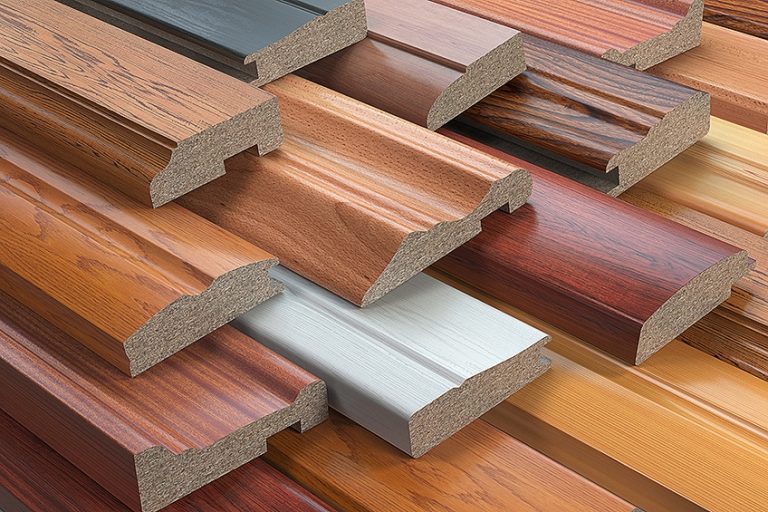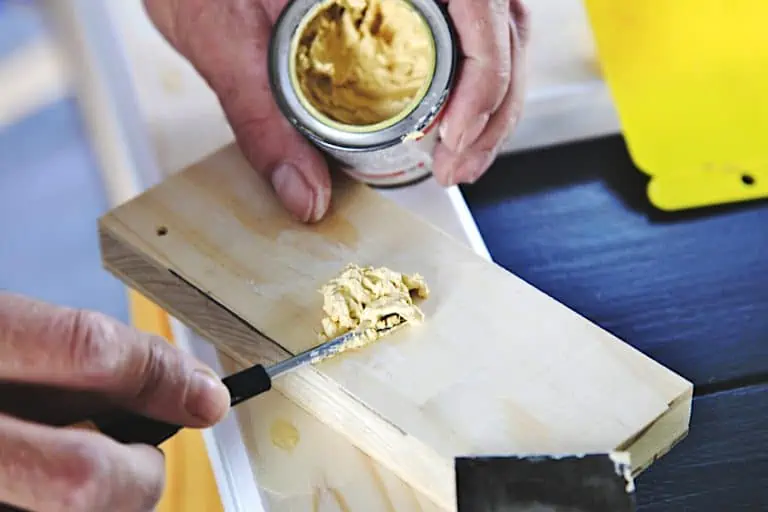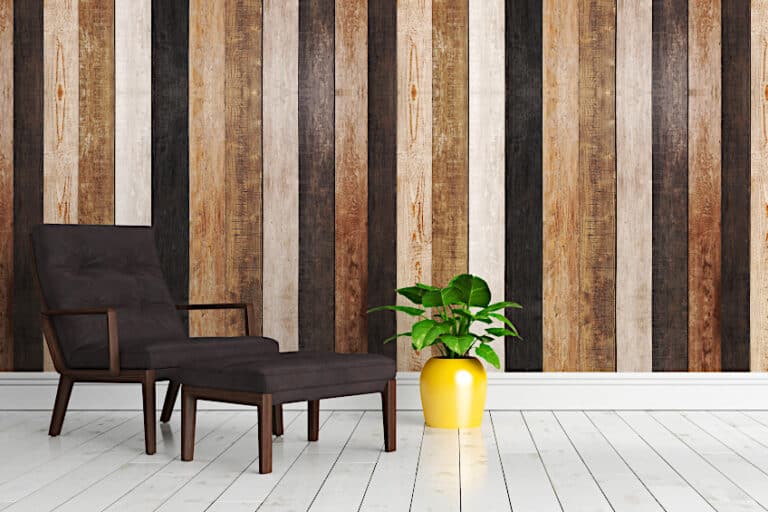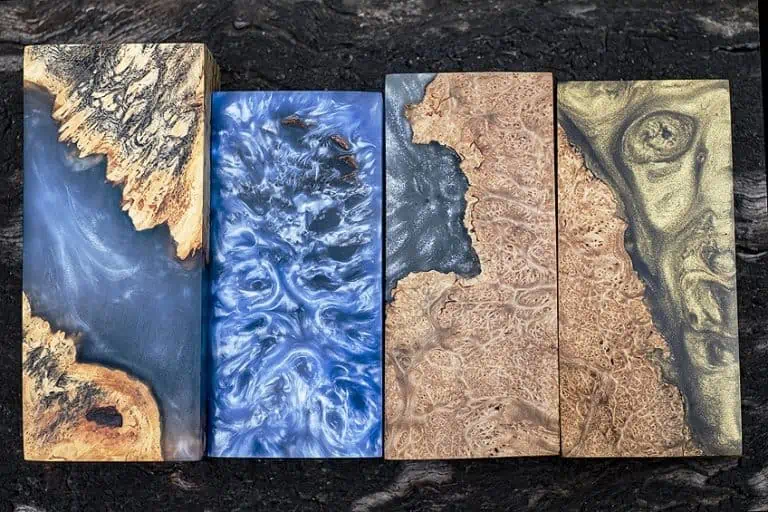How to Remove Heat Stains from Wood – Eradicating Heat Marks on Wood
Wooden furniture is an elegant and beautiful addition to any home. However, it can be quickly marred and damaged by things like hot items being placed onto it. Wooden furniture is attractive and durable and can remain so if unused. There are wooden items you use extensively every day, however, and these are often prone to developing heat stains or white marks. When you see these ugly stains on a wood surface, they might seem impossible to remove. Thankfully, this is not so, and we will be showing you how to remove heat marks on wood in this article.
What Produces Heat Stains or Marks on Wood?
The heat marks on wood or stains are produced by a combination of moisture and heat. When something hot comes into contact with your wooden surface, it opens the pores of the wood and allows moisture to seep into the wood. When it begins to cool down, the pores of the wood close, trapping the moisture in the wood surface.
The trapped moisture now changes the wood surface appearance, resulting in a stain or mark. If you find that the mark is white, then this is the result of a heat stain and is what we will be dealing with in this article. However, if the mark is black, this is the result of oxidation, and your wood is starting to rot. These types of marks are common in old furniture and require a completely different type of process to remove.

How to Stop a Heat Stain on Wood From Occurring
The best way is to try to prevent these types of stains or marks from appearing on your wooden surfaces, as this will save you a lot of time and trouble. The best thing to do is to put coasters or mats on your tabletop or wooden furniture surfaces to keep any hot items from coming into direct contact with the wood surface. Heat mats or coasters are fairly cheap, but if you do not have one nearby then use a book or any other item you can lay your hands on to save the beautiful appearance of your wooden furniture.
How to Remove Heat Marks From Wood
Wood, unlike glass or metal, can produce heat marks simply by putting a hot cup of coffee or a pizza box on the surface of your wooden table. These marks or stains cannot be removed by using the standard cleaners or polishers, and they leave your beautiful wooden furniture looking unsightly. However, these stains are not too difficult to remove if you use the correct materials and the right method. Next, we will be giving you step-by-step instructions on how to remove heat marks on wood, and what to do using different kinds of materials.
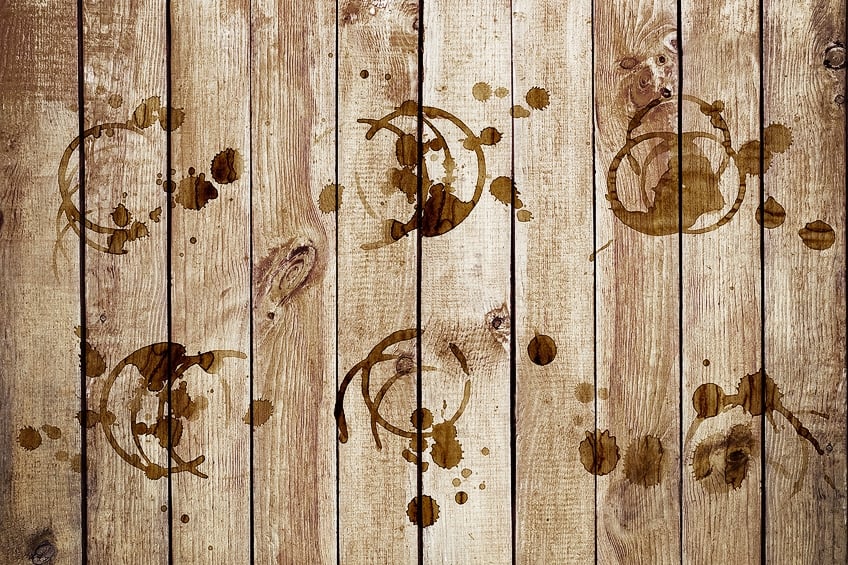
Using Toothpaste
Toothpaste is an alkaline material and is a great way to remove marks or stains from your wood, as it reacts with the stain and lifts it off. Toothpaste contains baking soda, but for it to work more effectively, we suggest you mix it with some more baking soda on a 50/50 basis. Remember to use non-gel or white toothpaste, as not all toothpastes contain the same ingredients and some may not work well.
- Take a clean cloth and clean the wood surface properly, making sure it is completely dry before you carry on.
- Mix the toothpaste with baking soda to form a paste. If it remains thick, use a little water to thin it.
- Apply the mixture to the stain and leave it for about ten minutes. This will give it a chance to interact with the moisture in the stain.
- Use a clean cloth to remove the toothpaste, trying not to press too hard.
- The stain should now be gone, but if not, try some of the other methods below.
Removing a Heat Stain on Wood with an Iron
When you apply heat to a wood surface, it reopens the pores and allows the trapped moisture to escape. Applying more heat will help to reverse the staining process and remove the stain. Be careful, however, as this method cannot be used on all types of wood.
- Take a clean cloth and clean the wood surface properly, making sure it is completely dry before you continue.
- Set the iron on a low dry heat and wait for it to warm up. You can also try a hairdryer.
- Take a towel or thick material and cover the stain. Now, use the hot iron over that spot. Try to move the iron around and do not linger on any single area. Be careful with the heat, as some older wooden furniture could warp if too much heat is applied.
- If the stain is stubborn and has been there for a while, it may require some steam. Only use steam if the dry iron does not work, and ensure that you continue to use the towel. Only use a small amount of steam and do not use it for long periods.
- Constantly lift the towel to see if the stain has been lifted. Stop applying the heat when you are satisfied that the stain has been removed.
- Apply some wood polish or other protective material to the wood surface to protect it. Make sure that you invest in some coasters or heat mats.
You need to be careful when using this method, as it does not work under all circumstances and you might even damage the wood and make the problem worse. A lot depends on the type of wood you have and also the type of finish you have on your wood. For example, does the wood surface have varnish as a finish? If you are not sure of what to do, then hold the steam iron over the stain without any pressure and take note of what happens. If you can see the stain is beginning to lift, then proceed as above.
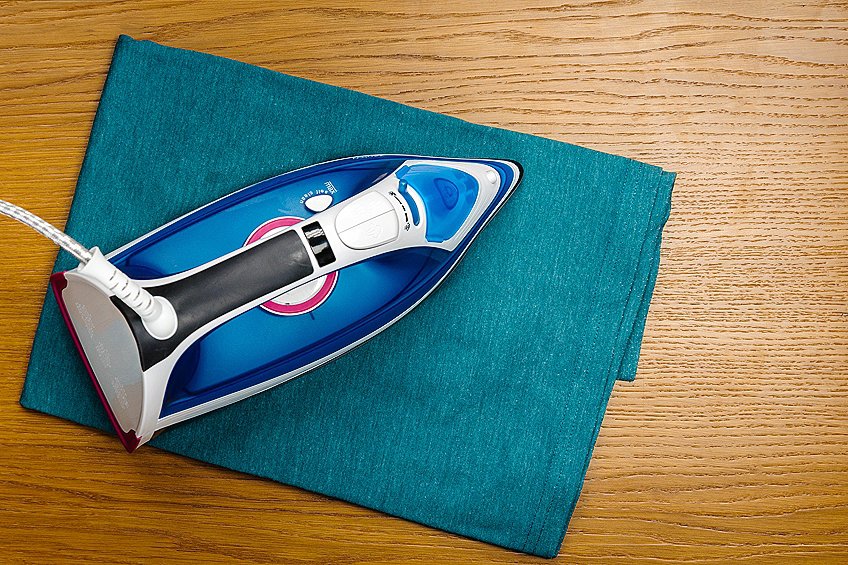
How to Remove Heat Stains From Wood with Lemon Oil
Some users have recommended using lemon oil for removing heat stains. All you need to do is lace a little lemon oil onto some material and then wipe over the area until you can see the stain coming off.
Chemical Wood Stripper
If all of the above methods have failed, then the chemical wood stripper method is guaranteed to be successful and your wood stain will be permanently removed. However, this method requires a lot more effort and time to complete, but your success will be 100% effective. Most of the wooden furniture today has a protective coating of varnish or a similar finish, and this needs to be removed first by using a chemical wood stripper before you can remove the heat stain or mark effectively.
Prepare Your Working Area
When working with wood strippers, you need to understand that they contain dangerous chemicals that can affect your health if breathed in or if they come into contact with your skin. It is better to work outside, but if you must work inside, be sure to open windows so that the room is well ventilated. Protect the area where the piece of furniture is standing by laying down some plastic sheeting or a drop cloth. You may also find it beneficial to wear a respiratory mask.
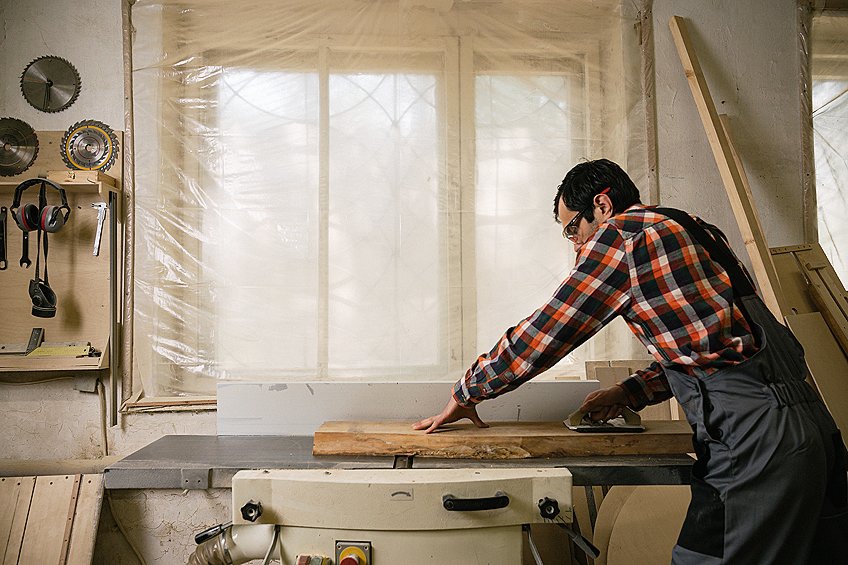
Get Your Materials and Tools Organized
Have all your tools and materials set where they can be reached easily, so you do not have to leave your work area running around to find some tool you need. Put on all the protective equipment you will need, including a shirt with long sleeves, a pair of long pants, and also some closed shoes. Here is a list of the tools and materials you will need:
- Plastic sheeting or drop cloth
- Chemical resistant gloves
- Safety goggles
- Respirator
- Plastic scraper
- Chemical wood stripper
- Paintbrush with natural bristles
- Clean rags
- Steel wool
- Fine-grit sandpaper
- Medium-grit sandpaper
- Electric hand sander
NOTE: Be sure to read the manufacture’s instructions on the chemical stripper container to be sure that you comply with all the necessary safety recommendations.
Decant the Chemical Wood Stripper
Pour the wood stripper into a small container that is resistant to chemicals, like a metal or aluminum bowl. Be careful when pouring and try not to spill any wood stripper on the floor or your clothes.
Apply the Chemical Wood Stripper
Take the paintbrush and dip it into the wood stripper, and apply a very thick layer onto the wood. Spread the wood stripper until it covers the entire surface of your wooden item, making sure that the layer of stripper remains thick and even.
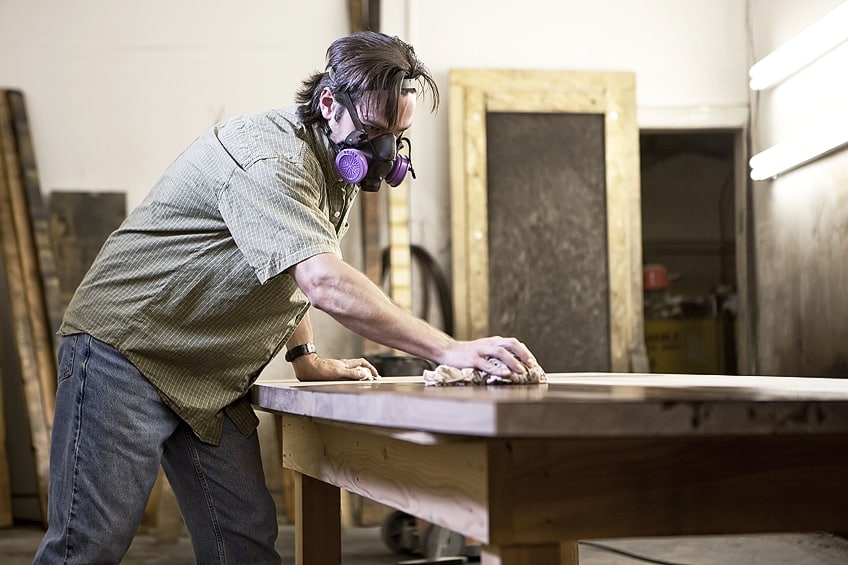
Allow It to Stand
The wood stripper requires about 20 to 30 minutes to soak into the wood surface. Every two or three minutes, you can check the progress. If you notice any dry patches, apply more wood stripper to those areas.
Remove the Wood Stripper
Take a plastic scraper and remove the varnish as well as the wood stain. Begin at one edge and, holding the scraper at a slight angle, push it across the wood surface in a straight line. Clean off all the debris and then begin at a different place, continuing to scrape off the wood stain stripper until your wood surface is free of any varnish or stripper.
Clean the Wood Surface
Put wood stripper onto a steel-wool pad and scour the surface gently, making sure that you move in the direction of the wood grain. Try to get into all the difficult places as well, and continuing going over the surface until you are satisfied that all of the protective coating on the wood has been removed. Wash the wood surface with a wet clean cloth, and allow it to dry out completely for at least 24 hours.
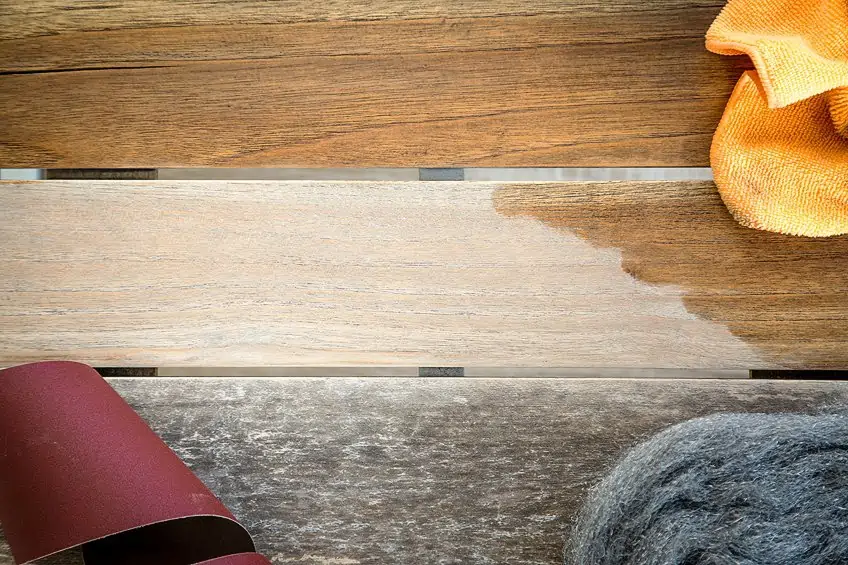
Sand the Wood Surface
When you are satisfied that the wood surface is completely dry, take some medium-grit sandpaper and begin to sand down the surface. This can be done by hand, but if the area is large, you can use an electric hand sander. Continue to sand until all traces of the stain and the varnish have been removed. You will begin to see the grain of the raw wood starting to show.
When this happens, you can change to fine-grit sandpaper and remove any marks or scratches made by the medium-grit sandpaper. Use a clean, damp cloth to wipe the surface, making sure that all the dust has been removed. You are now ready to re-stain and apply a new protective finish to your wood surface.
Eliminating Heat Stain on Wood: Other Methods
Here are a few more methods that others have tried to help remove heat marks on wood. Most of these methods involve using items you should be able to find around the house. These are easy methods that everyone can try.
- Rub some mayonnaise over the stain. Leave it for one hour and then wipe it off.
- Form a paste with salt and olive oil and rub this over the stain. Wait for an hour and then wipe it off.
- Rub some petroleum or vaseline over the stain. Leave it overnight and then wipe it off.
- Mix vinegar and olive oil at a 50/50 ratio. Rub this over the stain, leave it for about one hour, and then wipe it off.
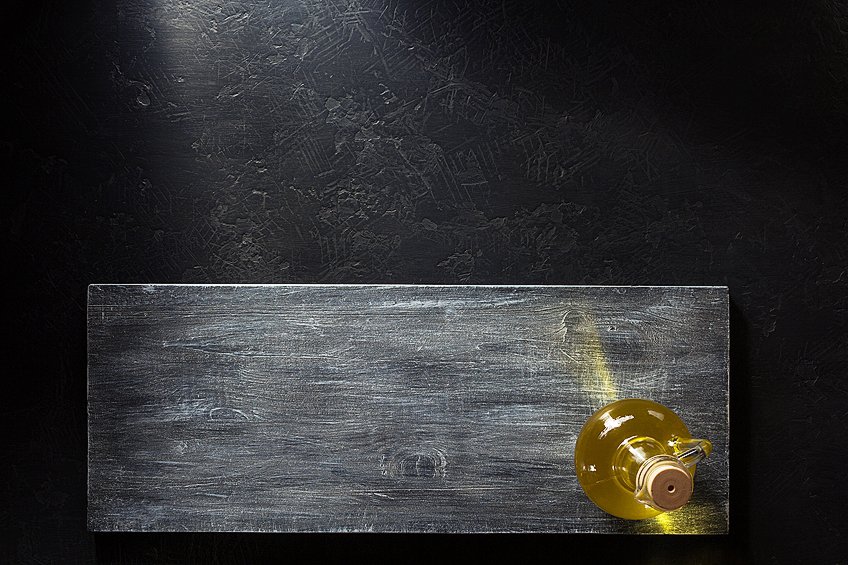
Frequently Asked Questions
Can I Remove Wood Stain From My Mahogany Furniture?
When dealing with mahogany, cherry, or eucalyptus furniture, you need to take special care and only use refined vegetable oil to remove the stain, so that the area you cleaned does not become blurry.
How to Get White Heat Marks Off Wood Table?
How to get white heat marks off wood table is quite simple. Mix baking soda and gel toothpaste in equal amounts until it forms a paste and apply it to the stain. You can leave this for a few minutes and then wipe it off. If this does not work, there are a number of other methods you can try.
How Do I Get White Scuff Marks From My Vacuum Cleaner Off My Furniture?
Vacuum cleaners often leave white scuff marks on sofa legs or wooden furniture baseboards, which can be regarded as minor wood stains. Try any art or pencil eraser, and then clean the surface using a damp cloth. If this does not work, try some all-purpose cleaner and wipe it off with a clean, dry cloth. Lastly, use some paste wax and rub it over the area, and then gently remove it with a clean, dry cloth.
Is It Possible to Remove a Heat Stain on Wood Table with a Veneer Finish?
Yes! Take a heat gun or hairdryer and hold it fairly close to the stain for about 30 seconds, and then watch the heat stain on wood table disappear before your eyes.
Will Mayonnaise Take the Heat Stain Off My Wooden Table?
Yes. Take some mayonnaise and apply it to the wood stain, leave it overnight, and then just wipe it off with a clean, dry cloth – the marks will be gone.

I have been into woodworking since 2005 and woodturning since 2011. Because of my love for wood and woodworking, I started woodhappen.com to teach other enthusiasts about how to finish and seal wood, the best woodworking tools, the different types of wood, and everything else related to woodworking! Read more about me here.


